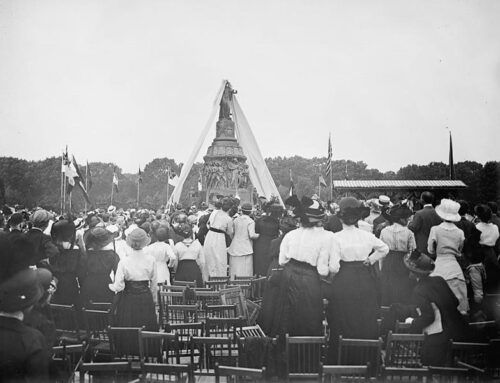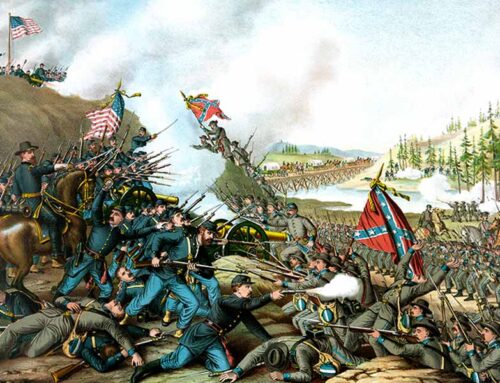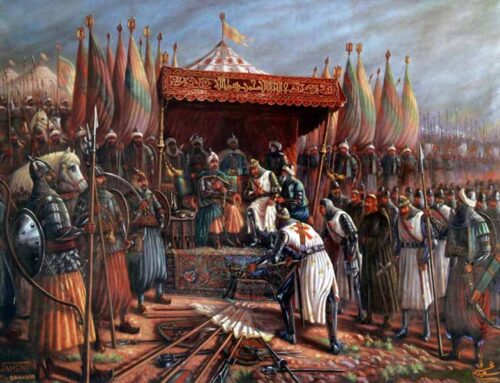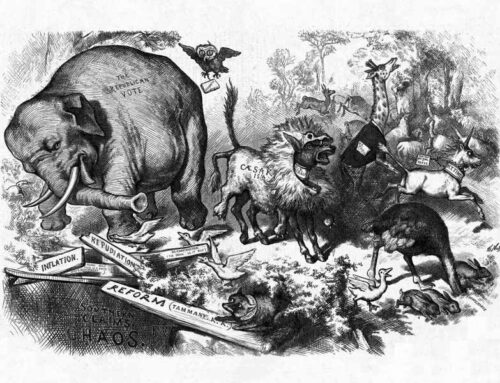
Attack on Pearl Harbor,
December 7, 1941
![]() t was a quiet Sunday morning at Hawaii’s Pearl Harbor, home of America’s U.S. Pacific Fleet. At five minutes before 8:00, many of the 60,000 sailors and other military personnel stationed there were still in their bunks resting or else eating breakfast; a few were on duty, others just straggling in after a long night. What appeared to be another beautiful day in paradise would quickly turn into a nightmare as 183 Japanese aircraft arrived from over the mountains north of Pearl Harbor with a mission to destroy the U.S. Fleet. Bombs were dropped on fuel and ammunition dumps, buildings, and ships—even the newly-built hospital. Japanese pilots strafed everything in their path with wing-mounted machine guns, while others dropped torpedoes.
t was a quiet Sunday morning at Hawaii’s Pearl Harbor, home of America’s U.S. Pacific Fleet. At five minutes before 8:00, many of the 60,000 sailors and other military personnel stationed there were still in their bunks resting or else eating breakfast; a few were on duty, others just straggling in after a long night. What appeared to be another beautiful day in paradise would quickly turn into a nightmare as 183 Japanese aircraft arrived from over the mountains north of Pearl Harbor with a mission to destroy the U.S. Fleet. Bombs were dropped on fuel and ammunition dumps, buildings, and ships—even the newly-built hospital. Japanese pilots strafed everything in their path with wing-mounted machine guns, while others dropped torpedoes.
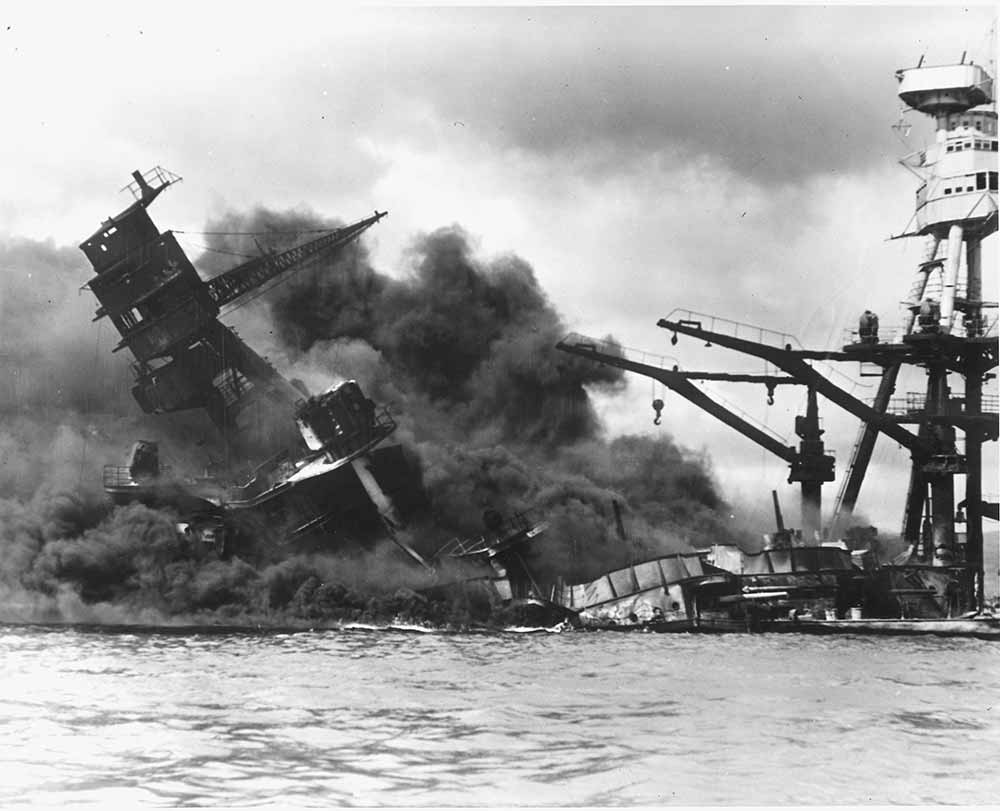
USS Arizona Burning in Pearl Harbor
The attack was a complete surprise for those stationed there. Some sailors went down with their ship while still asleep in their bunks. Some were trapped only to drown inside, while others had to choose between staying aboard a doomed ship or taking a chance by diving into a harbor aflame with burning fuel. It was a living hell.
But in true, heroic, American fashion, these brave men and women pulled together and soon ammunition was passed around and weapons lockers were broken open in order to fight back. Wounded were carried to safety and trapped servicemen rescued. Pearl Harbor is often remembered as a day of days, monumental as America’s provoked entry point into the Second World War. But on Sunday, December 7, 1941, it was down to how each man responded and “conducted himself in wartime”.
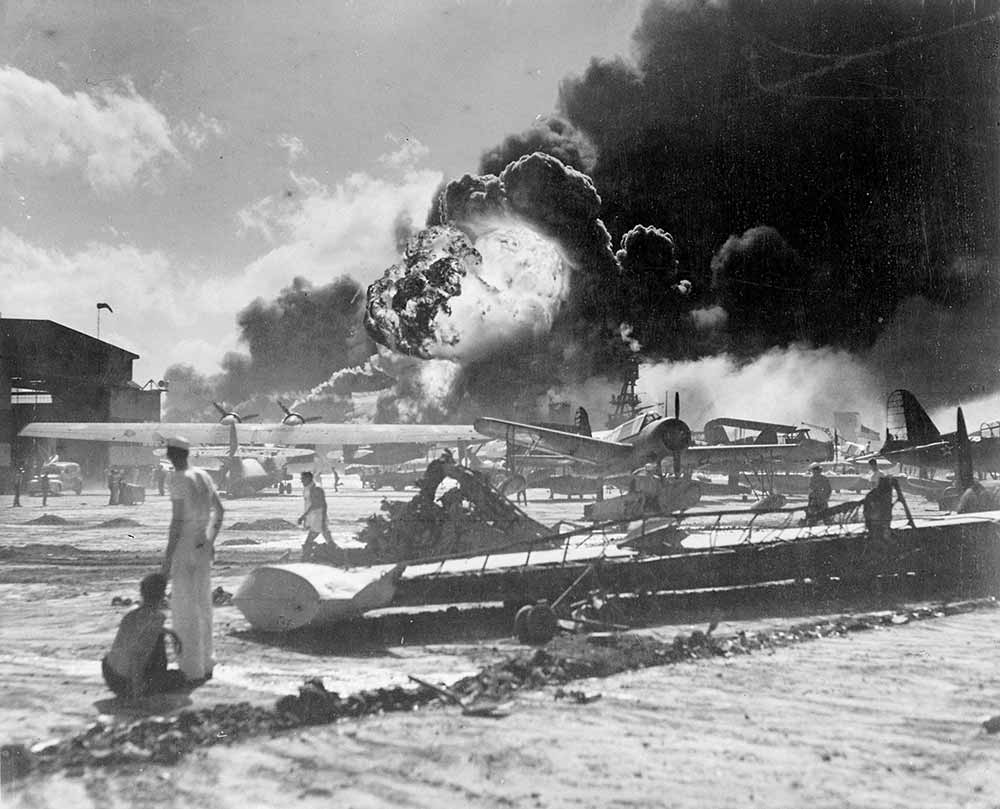
As explosions emanate from the USS Shaw sailors watch amid wrecked planes at the Ford Island seaplane base
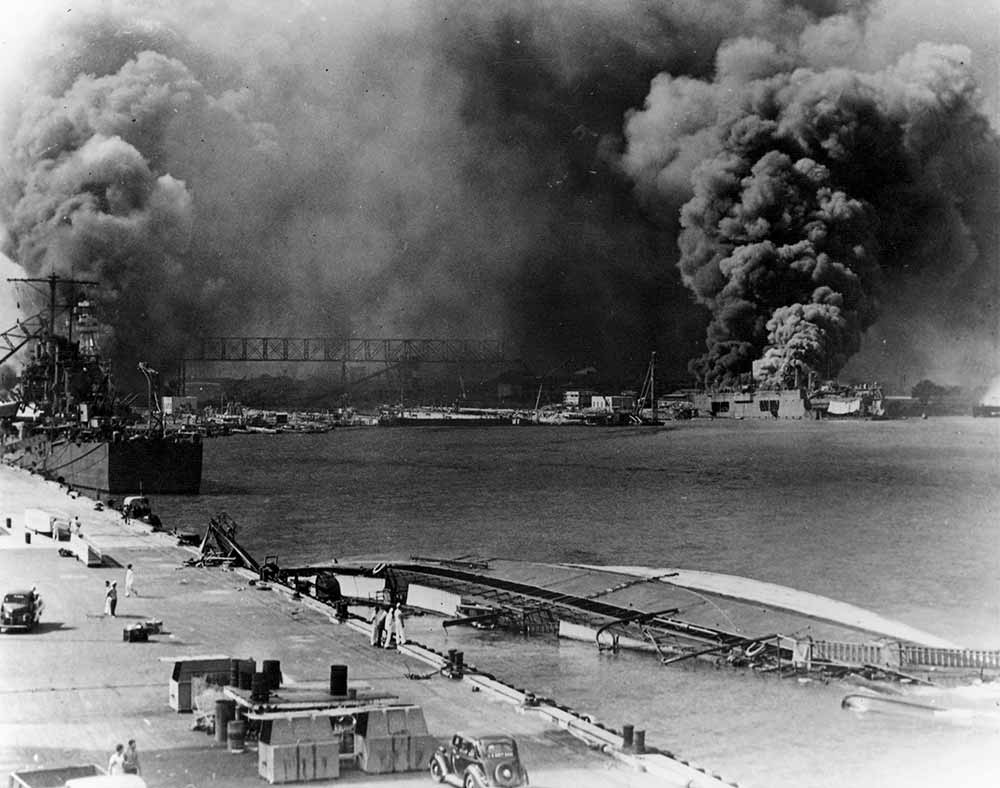
The capsized minelayer USS Oglala is seen in the foreground
Below are compiled a few first-hand accounts from the survivors of this devastating attack. Let us never forget.
“I had just awakened and took a shower when I heard all these explosions at Pearl Harbor. I looked out the barracks window and just then a Jap Torpedo Bomber flew by with his torpedo. I yelled out to my buddies ‘the Japs are here’ and the response I got was, ‘go to bed you’re drunk.’
About that time a bomb hit the Central Mess Hall of our composite barracks. My buddy… and I asked ourselves where and what to do during war time. I decided I should be with my B-18 Bomber since I was the Crew Chief and Engineer Gunner. (We) cautiously proceeded to the Flight Line where—in between Jap strafing runs, and with many high-ranking officers’ help—we managed to tow my aircraft out onto the field for disbursement.
As the Japs flew by after leaving Pearl Harbor my buddy and I emptied our 45s at them—sometimes the gun got so hot we couldn’t hold it.
The next day they took all the flyable B-18 aircraft and crews and put us in one squadron. We called ourselves the suicide squadron for we went looking for the Jap fleet with two 30 Cal. machine guns per aircraft. Later on we flew dawn to dusk on submarine search and patrol. We then received B-17s and moved to Bellows Field and on to the Midway Battle.”
—As written on November 14, 1991, by Staff Sergeant Edward J. Dvorak, 72nd Bomb Sq. (H), stationed at Hickam Field on December 7, 1941
“I was over at Lt. Shea’s bachelor quarters making myself breakfast. Throwing out the egg shell, I noted three odd aircraft flying about. Then I noticed the red ball, and I knew right that minute that it was the day. Only wearing tennis shorts and sneakers, I ran about the buildings screaming, ’They are here!’ and then all hell started to break loose.
I made it back to the barracks just in time, to get some better wear… and just as I exited the barracks, they were hit.
From that moment on, running about trying to escape from being hit, I and two others started picking bodies to take to the hospital which just opened the day before. I was later hit, and knocked out for a while… I was bleeding from a hanging finger and also leg wounds. But did not turn myself in. I managed to put my index finger back together with masking tape and it healed after six weeks. The other wounds, I also took care of myself. Fearing that if I did turn myself in, I would be placed in a bed or whatever, and probably get hit again, because the Japanese did not honor the new hospital. Nevertheless, I did the best I could in trying to save those more unfortunate.
Later our group fought in the Midway Battle, and then to the South Pacific, till we were in the Guadalcanal Island.”
—Everest Capra, Army Medical Corps
“I am an on board survivor of the attack on the USS Arizona on Dec. 7, 1941. Six men were trapped on the foremast; on the sky control platform one deck above the bridge, where the Admiral and the Captain were killed. We had no way off and were burning alive, when we saw a sailor on the USS Vestal. We waved at him and got his attention, and he threw us a line and we tied it off to a bigger line and proceeded to go hand over hand to the Vestal after we suffered burns. The Japanese were firing at us as well as the oil in the water under us was burning.
We all made it across the line because of the bravery of the seaman, Joe George. Two men died of their burns that day at the hospital and the four other men, Bruner, Lott, Rhiner, and myself lived. I was in the hospital for a year, but because of Joe George I went on to have a family. There are two of us alive today. We attended the 70th USS Arizona reunion in Hawaii.
Joe George was never awarded anything for his bravery and going against a direct order from his Captain, who wanted to pull away from the Arizona and leave us all to die. He is no longer with us, but I believe his widow, in his memory, should be awarded the Navy Cross.”
—Donald Stratton



